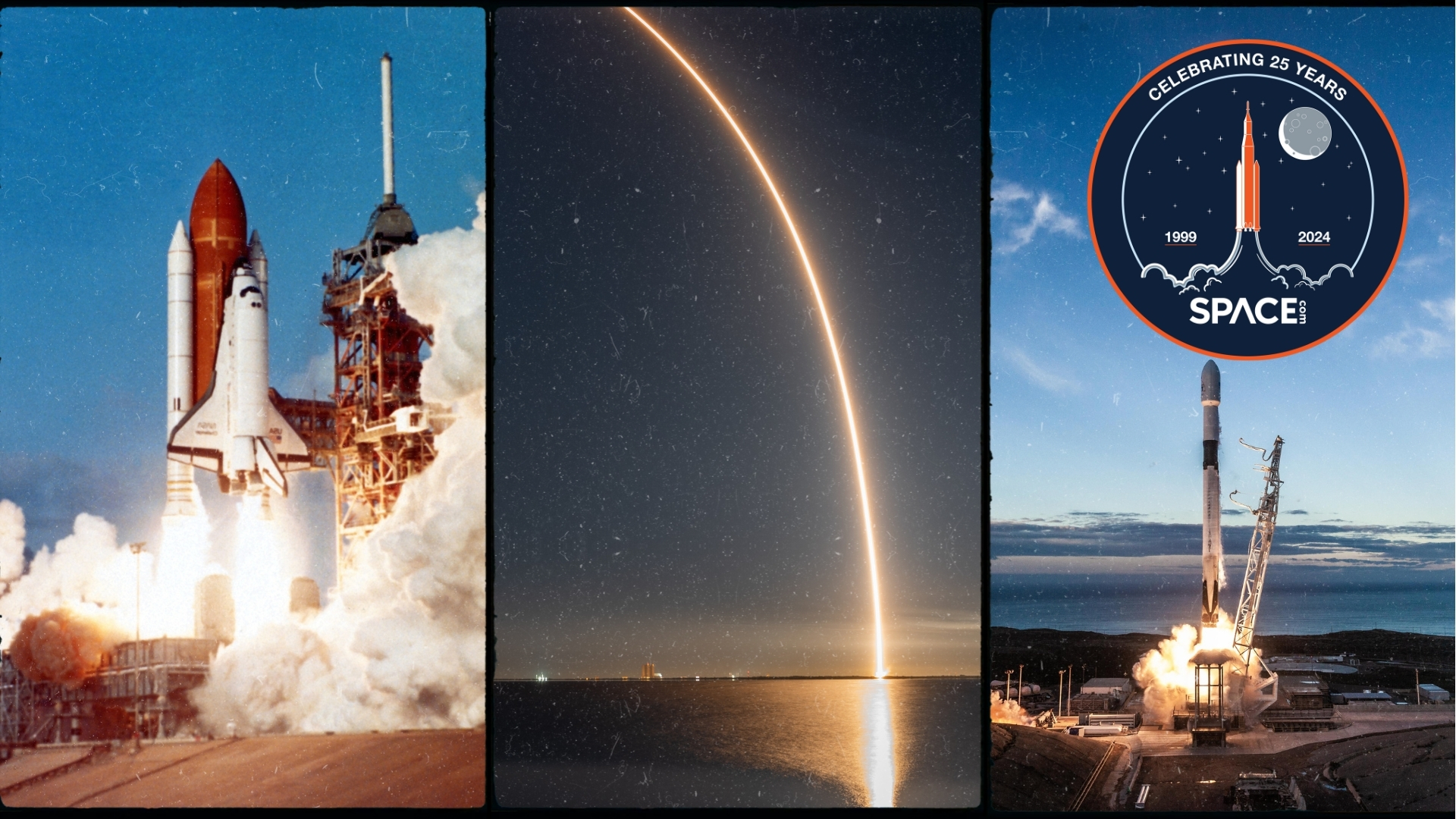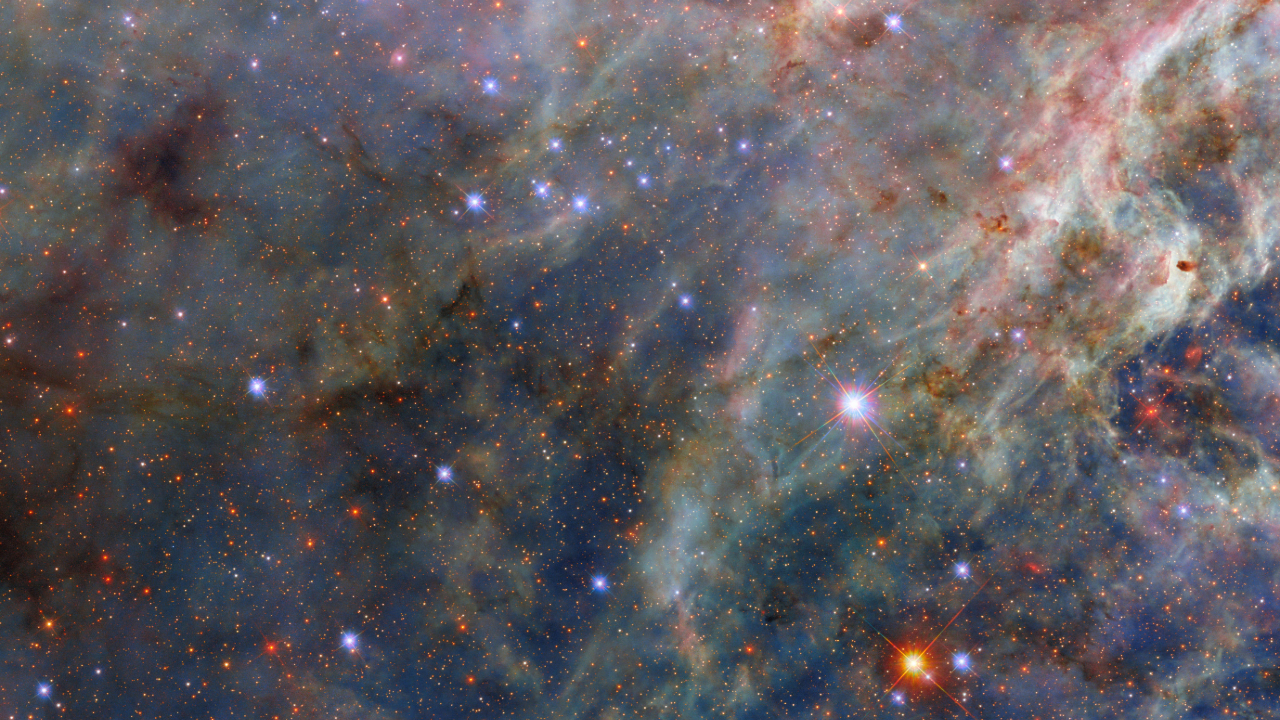SpaceX, the rise of China and more: How spaceflight has changed since 1999
Reusable rockets, sophisticated software and dangerous debris have altered the final frontier.

Space travel has evolved tremendously over the past quarter century, seeing a transformation from government-driven, exploratory missions to a dynamic, more commercially driven frontier.
In 1999, there were 79 orbital launch attempts, including intercontinental ballistic missile (ICBM) tests. Many of the missions were performed by the venerable space shuttle, Delta and Soyuz rockets, with the U.S. and Russia leading the way. The International Space Station (ISS) was in the early days of its construction, with NASA leading a number of countries to build the grandest of all international cooperation projects.
The scene has changed dramatically. Technological advancements, transformative and autonomous software and emerging blocs of international cooperation have brought about a new and vibrant, yet more congested and even contested, arena in low Earth orbit (LEO) and beyond.
Check out a list of Space.com's special 25th anniversary week stories in our hub linked here!
The first Falcon 9 launch took place in 2010, with the first successful first-stage landing coming in late 2015. Reusable SpaceX Falcon rockets are taking off, landing and being readied for reuse. There were 98 Falcon launches in 2023 alone, out of a total of 223 launches attempted, dominating the global launch market.
Related: 8 ways that SpaceX has transformed spaceflight
Jonathan McDowell, a Harvard-Smithsonian Center astrophysicist and spaceflight tracker, notes one key development in space travel in recent times: software.
Developments in software have enabled huge advancements, such as the sophisticated algorithms for landing of Falcon rockets on drone ships and landing pads, as well as autonomous navigation of NASA’s Curiosity and Perseverance rovers on Mars.
Breaking space news, the latest updates on rocket launches, skywatching events and more!
New software also allows for detailed mission simulations, training astronauts, improved communication with distant spacecraft, high-fidelity simulations of space environments and human-machine interaction for safer, more intuitive operations.
Going back to the launch arena: Europe, China, Russia, Iran, Israel, Japan, India and North and South Korea all contributed to make 2023 the most active year for launches so far worldwide. Others, including Britain, Germany and Spain, aim to be flying commercial orbital rockets soon.
Notably, China was number two in this list. China has transformed into a leading spacefaring nation over the last decade, launching a national-record 67 times last year. It has sent landers and sample-return missions to the moon, put a rover on Mars, and built the Tiangong space station, providing a new orbital outpost for astronauts. The new station will likely attract new partners, especially as the ISS winds toward decommissioning in 2030 or thereabouts.
China also wants to build megaconstellations like SpaceX's Starlink in LEO for communications and more — meaning that a competition for orbital planes and the use of radio frequencies is probably in the offing. Such plans are indicative of a complex situation in space.
Victoria Samson, chief director for space security and stability for the nonprofit Secure World Foundation, notes how LEO has indeed already changed.
"Space travel is now operating in a much more complicated environment than it was 25 years ago, in terms of an increasing number of actors, the rise of very large constellations and three major debris-causing incidents." These were the Iridium-Cosmos satellite collision in 2009, China's 2007 anti-satellite (ASAT) test, and Russia's 2021 ASAT test.
The presence of growing large constellations — not to mention space debris — will also require careful calculations for the timing and path of launches.
Related: The Kessler Syndrome and the space debris problem
On the more positive side, the last quarter century has proven that countries can work together.
"I think that ISS has proven that the international community can work together on scientific projects in space and that humans can be in space for (relatively) long periods of time," Samson said. "Now it's time to take the lessons learned from that and apply it to the next 25 years in space."
"Plus we now have (some) reusable launch vehicles, which is a game-changer," she added. A range of companies in the U.S., China and beyond are attempting to follow the trail blazed by SpaceX.
Looking back 25 years: In 1999, NASA's Mars Polar Lander set off for the Red Planet. That mission ended with a hard landing, but now there are teams on Earth matching their schedules to Martian daytime, operating huge nuclear-powered rovers. There is also a renewed interest in the moon, with a flotilla of missions planned, mostly under the aegis of the NASA-led Artemis program, while the China-led International Lunar Research Station (ILRS) is also taking shape.
While the Mars Polar Lander launched on a now-retired Delta II rocket, one of the flagship missions of recent years, Europa Clipper, is set to launch on a commercial Falcon Heavy rocket later this year. Other major developments include the James Webb Space Telescope (JWST) providing new and deeper insights into the universe than Hubble, and the proliferation of cubesats and smallsats — miniature yet highly capable satellites that have, to a degree, democratized access to space.
One of the most exciting, attention-grabbing and illustrative recent developments in space travel — demonstrating not only advances but also ambition and vision — is Starship, SpaceX’s latest effort to revolutionize space travel through full reusability, low cost and high payload capacity. Thirty-three high-thrust, methane-burning Raptor engines power Starship's Super Heavy first-stage booster, propelling the upper stage on its way to orbit. The stainless steel rocket is the largest and most powerful launcher ever flown, and its ongoing test flights draw worldwide attention.
Nearly a quarter of the way into the new century, the space industry stands at a point in which countries are forming coalitions to explore and even maintain crewed habitats on the moon, commercial firms determined to settle Mars and countless companies looking to transform space with innovative ideas.

Andrew is a freelance space journalist with a focus on reporting on China's rapidly growing space sector. He began writing for Space.com in 2019 and writes for SpaceNews, IEEE Spectrum, National Geographic, Sky & Telescope, New Scientist and others. Andrew first caught the space bug when, as a youngster, he saw Voyager images of other worlds in our solar system for the first time. Away from space, Andrew enjoys trail running in the forests of Finland. You can follow him on Twitter @AJ_FI.

